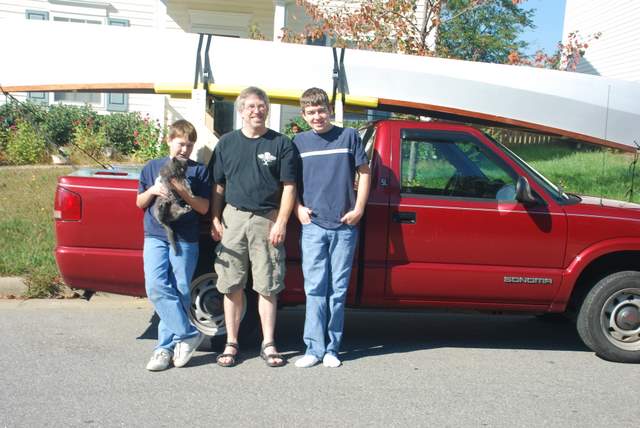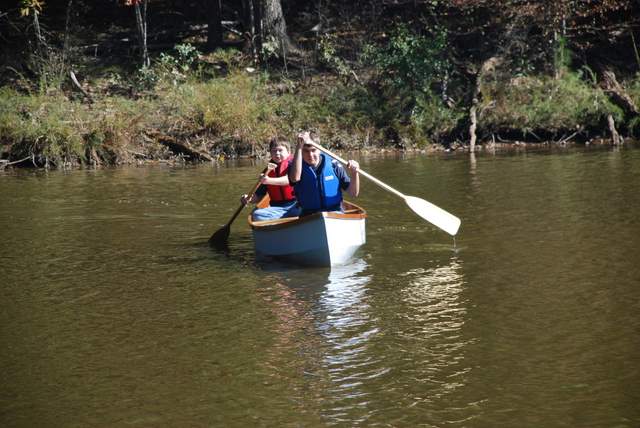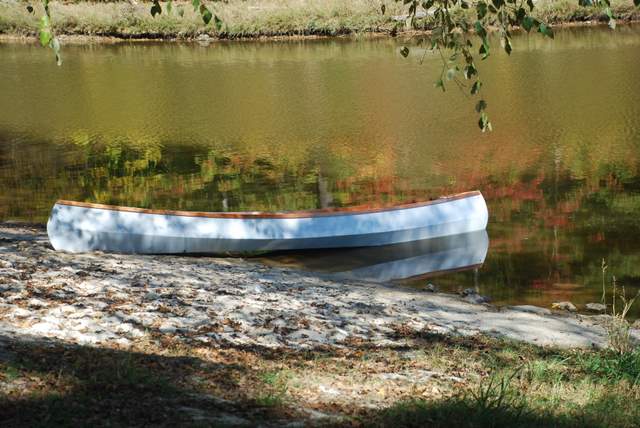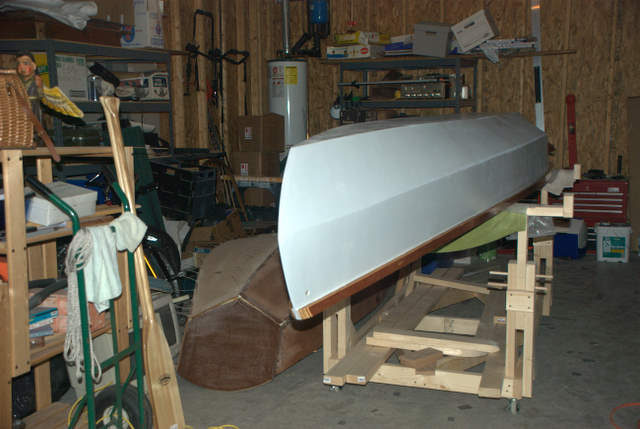On Sunday, October 26, I took the canoe out for a test launch with the boys. The canoe is not yet finished. It has two coats of primer outside, and will receive two more. Fairing is needed inside. The breasthooks are not installed, although thwarts are installed at the breasthooks. After all of that, it needs paint. We are taking it out because it is ready enough, and we don't want to wait until next spring.
Renee wanted to go, but her work schedule, combined with a little car trouble, bumped her to another trip. Not only was this a test launch for the canoe, it was a test for my redneck conoe rack assembled from 2x4's and sheetrock screws. The rack worked well, by the way.
My crew for the day.

The launch site was Lake Crabtree County Park in Cary, NC.
View Larger Map
I had the boys paddle out for pictures. These two pictures look calm and peaceful as the canoe makes a turn back to the beach. The actual scene was much more chaotic as they learned that side-to-side motions in a round bottom canoe cause a lot of tipping. No one got wet, and no water was taken aboard.

The weather was very calm, as you can see. We paddled the length of the lake, beached the canoe, hiked a few hundred feet of the greenway there, and found a spinning reel on the beach. It worked.
I went back out Monday with Renee and her friend Nikki from work. Another calm day. We paddled the length of the lake again.
This canoe feels tippy because of the rounded bottom, but has good secondary stability. It won't capsize or take water unless you panic, or are trying very hard. The tracking is excellent. It paddles easily, and two paddlers can achieve good speed. It steers easily. If you are considering building a canoe, I would recommend this one.










